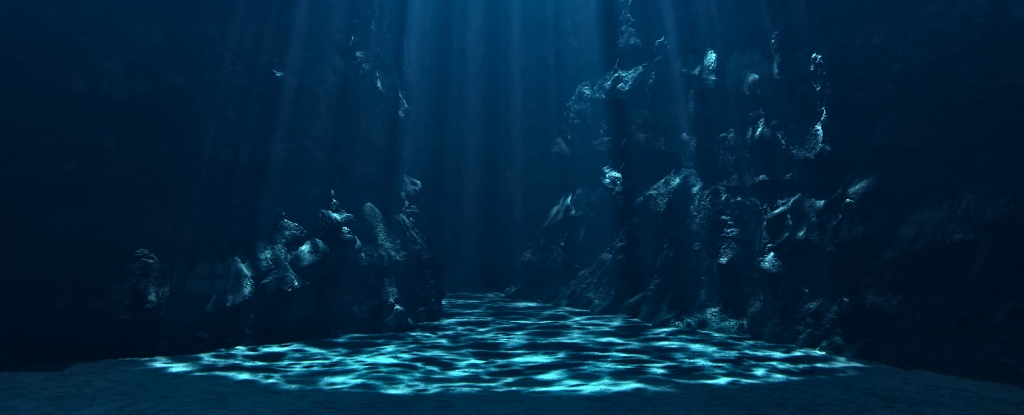The absolutely incredible discovery of several fully articulated shark fossils from the Late Cretaceous, 105 to 72 million years ago, is shedding some much-needed light on the mysterious shark family tree.
In the Lagerstätte fossil beds of Vallecillo in Mexico, paleontologists have made the find of a lifetime: several exceptionally well preserved fossils of an extinct genus called Ptychodus.
These fossils preserve not just the sharks’ articulated bones, but some of their cartilaginous structures, outlines of their entire bodies, and possibly even organs. These details reveal how the sharks’ teeth and vertebrae fit in with the context of their bodies, a new tool for estimating their sizes and where they fit in, phylogenetically.
The fossils finally confirm that Ptychodus are a type of shark belonging to the Lamniform family, which includes great white sharks.
Ptychodus would have dwarfed modern great whites, reaching up to a whopping 9.7 meters (32 feet) in length. Though their feeding strategy also couldn’t have been more different: their teeth consisted of crushing plates that allowed the animals to feast on the shelled animals that would otherwise be too difficult to eat.
“Our results support the view that lamniforms were ecomorphologically highly diverse and represented the dominant group of sharks in Cretaceous marine ecosystems,” write a team of paleontologists led by Romain Vullo of the French National Centre for Scientific Research.
“Ptychodus may have fed predominantly on nektonic hard-shelled prey items such as ammonites and sea turtles rather than on benthic invertebrates, and its extinction during the Campanian, well before the end-Cretaceous crisis, might have been related to competition with emerging blunt-toothed globidensine and prognathodontine mosasaurs.”

Ptychodus fossils have posed a mystery ever since the first fossils of its grinding teeth were found in England back in 1729. Most of the remains that have been found in the intervening centuries have been teeth and vertebrae, the only parts of a shark’s skeleton that are made of bone. The rest, being cartilage, don’t tend to survive long enough to be fossilized, leaving a lot up to the imagination.
Fragmentary though they are, those few remains found around the world offered enough clues to hint at the animal that left them.
There are sharks that adopt a similar feeding strategy today, known as durophagy, providing precedence for such a diet. The relative absence of other remains when so many teeth have been found in Late Cretaceous fossil beds confirms it likely had a skeleton of cartilage. And the rare Ptychodus vertebrae we do have are consistent with vertebrae found in other sharks.
Based only on the sorts of remains sharks usually leave behind, it’s impossible to infer with certainty what those sharks looked like. Even our understanding of the famed megalodon is based on a whole lot of educated guesswork.
But then we get something like the Vallecillo Lagerstätte.
A Lagerstätte is a type of fossil bed that tends to preserve remains incredibly well, including the soft tissues that usually decompose before the fossilization process can take place. Vallecillo Lagerstätte is where paleontologists found six specimens of Ptychodus that are finally revealing the literal shape of this ancient predator.

None of the fossils were of particularly large sharks, with the longest reaching just over 2 meters in total length. But, importantly, the fossils revealed the sharks in the greatest anatomical detail we’ve ever seen, allowing the researchers to extrapolate that anatomy onto other recovered teeth, inferring a maximum length of 9.7 meters.
We now also know how many vertebrae these sharks had, how big their eye sockets were, how many fins they had, the size of their heads, and the shape of their bodies. This allowed the researchers to confidently classify the sharks as lamniform, and determine that they could swim at great speeds.

They also had a body form unlike any living durophagous shark, which really drives home how difficult it can be to determine a shark’s morphology based solely on its teeth. It’s possible, in fact, that Ptychodus was the largest durophagous shark ever to have lived – far larger than the biggest alive today.
“The tachypelagic ecomorphotype revealed by the newly discovered material from Mexico challenges the widely held view that the durophagous genus Ptychodus was a group of bottom-dwelling sharks feeding mainly on shelled benthic invertebrates such as inoceramid bivalves,” the researchers write.
“New evidence indicates that Ptychodus was an open-water, fast-swimming predator that preyed on well-armored pelagic organisms such as large ammonites and sea turtles, thus confirming the more active nektonic lifestyle previously suggested based on morphological features of vertebral centra and placoid scales.”
Wonders, we sincerely hope, will never cease.
The team’s research has been published in the Proceedings of the Royal Society B: Biological Sciences.





